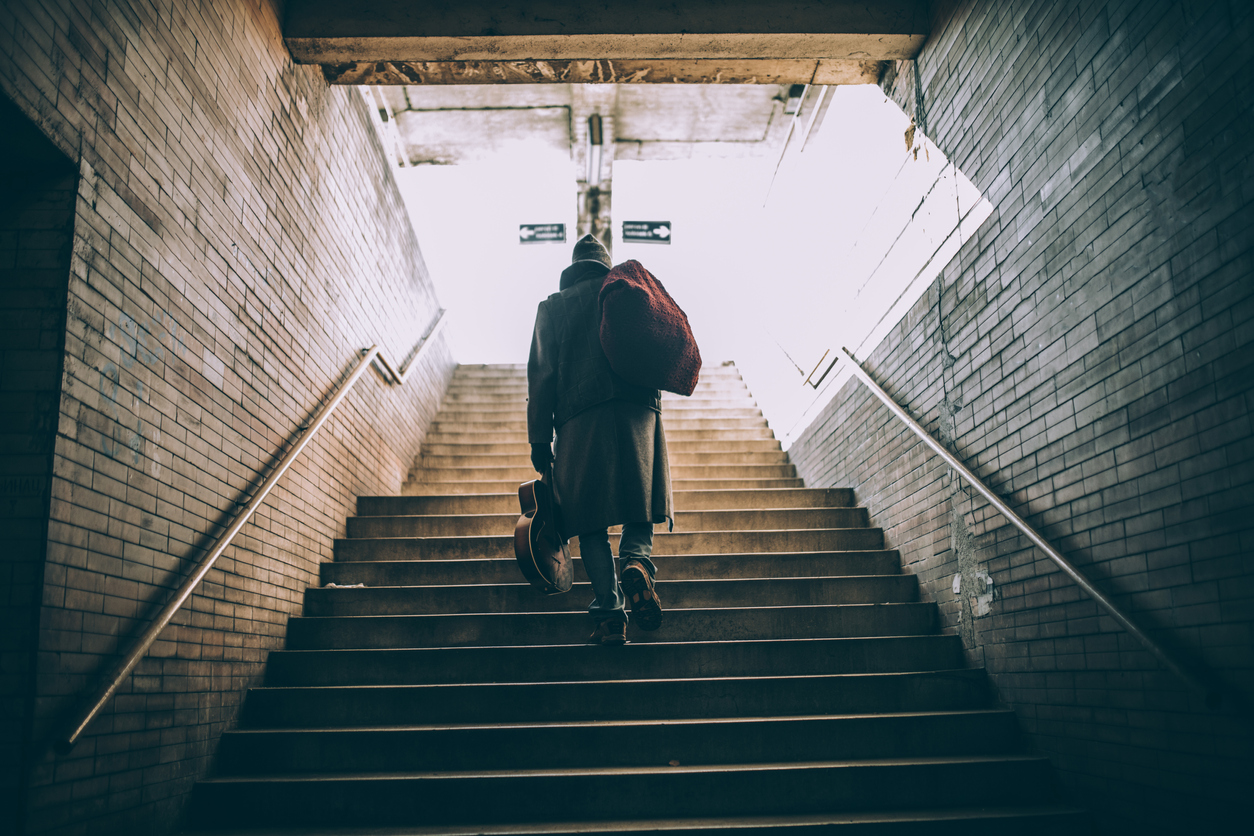Russia’s Middle Class: Between a ‘Sticky Floor’ and a ‘Sticky Ceiling’

Upward and especially downward income mobility in Russia is higher than in developed countries, making it difficult to form a fully-fledged middle class. And the likelihood of being trapped in long-term poverty turns out to be greater than the transition to stable affluence. This is the conclusion reached by HSE University experts.
Svetlana Mareeva, Director of HSE University’s Centre for Stratification Studies and Ekaterina Slobodenyuk, a Research Fellow at the Centre have analysed income mobility among Russians, and presented their findings in working papers published in a series of HSE University preprints.
The authors examined population mobility between income quintiles (20 per cent groups) at four- and nine-year intervals (2009–2017 and 2014–2017). Svetlana Mareeva and Ekaterina Slobodenyuk used monthly average per capita household income based on data from the Russian Longitudinal Monitoring Survey — HSE (RLMS — HSE), taking separate income items into account, to identify quintiles and then analyse mobility between them. They examined the status of more than 13,000 Russians between 2014 and 2017 and about 6,000 between 2009 and 2017.
According to estimates made by HSE University experts, individual income mobility remains high in the short and medium term, as in earlier periods during the modern history of Russia. In particular, in 2014–2017, 41.8% of the working age population retained their positions, 29.4% moved to higher income quintiles and 28.8% to lower income quintiles. When children and retired people were included, the shares were 42.6%, 29.2% and 28.2%, respectively. The scale of upward and downward mobility in Russian society is higher than the average for OECD countries. In terms of those who stayed in the same quintile, Russia is similar to countries such as the UK, Korea, Turkey, and Greece, where only 40–44% remained in the same quintile for the four years of observation.
During the nine-year study, Russians divided into three almost equal groups: 33.1% remained in their quintile, the relative wellbeing of 34.1% of the population increased, and 32.8% declined. Income mobility in the nine-year study in Russia was higher than in OECD countries, where 38% retained their positions, 32% moved to a higher quintile and 30% to a lower one.
According to the authors' calculations, the most stable sectors of the population were the most and least well off. Over the four-year period, 54.3% of the upper income quintile and 58.9% of the lower income quintile retained their position, while over the nine-year period, these figures were 38.9% and 46.1% respectively. Russians are less likely to remain in the top quintile than citizens of OECD countries, which indicates the fragility of maintaining even a modest overall standard of well-being, and, in fact, are significantly more likely to fall into stagnant poverty, especially in the medium term.

The authors assessed the scale and direction of income mobility not only between the start and end points of the observation period, but also within shorter time intervals, allowing them to construct a more detailed classification of mobility and to assess the probability of stagnant poverty.
Calculations showed that in 2014–2017, 45.7% of Russians experienced multi-directional income changes, while in 2009–2017, this applied to the vast majority of those surveyed – 87.1%; a significantly lower proportion of those surveyed were in a stable position: 22.1% and 5.2% respectively. As a result of step by step movements in their income, 42.6% remained in or returned to their original income quintile over four years, and 33.7% in the nine-year period. During the four-year period, the situation improved for 29.2% of Russians and deteriorated for 28.3%, while over the nine-year period it was 33.5% and 32.7% respectively.
Svetlana Mareeva and Ekaterina Slobodenyuk classify people who were in the bottom income quintile for three years out of four, or seven years out of nine, and didn’t rise beyond the second quintile in the remaining time, as being in the category of the ‘sticky floor’. The ‘sticky ceiling’ included those who were in the top income quintile in similar periods and did not fall below the fourth quintile. The survey revealed that 12.8% of Russians in the four-year study and 5.1% in the nine-year study ‘stuck’ to the floor and 10.4% and 3.7% respectively ‘stuck’ to the ceiling.
The likelihood of being on the ‘sticky floor’ is greatest for families with children and non-working pensioners who were previously engaged in unskilled and low-skilled work
The stagnant poverty of most families with several children reduces their status in society, discourages demographic growth and reinforces inequalities in starting opportunities in an intergenerational perspective. Mareeva and Slobodenyuk point out that families with one or two children have a much better chance of achieving stable prosperity and well-being than those with more children.
The relative well-being of most retired people, because their average income exceeds subsistence level, is, in the authors' view, misleading, since this economic approach does not consider the expenditure of older age groups on medication and medical services.
The use of a similar methodology for estimating mobility through a subjective assessment of the position on the ‘poverty-wealth’ scale in the four-year study shows that these estimates also fluctuate considerably. A third (32.4%) of the population considered their economic situation to be extremely precarious at least once in the four-year period. At the same time, 33.6% declared themselves at least once to be among the 20% most well off.
Subjective mobility proved to be higher than objective mobility, and the proportion of those who lowered their relative estimates of well-being during this period was significantly higher than those who raised them – 38.4% against 26.3%. Given the variation within the four-year study, multidirectional subjective mobility is the most common experience. A deteriorating situation was noted by 20.4% of Russians, which is significantly higher than those noting improvement – 11,9%. This perception reflects significant differences in the subjective perception of changes in income from those observed objectively.
As noted by the study authors, the scale of the zones of subjective well-being and disadvantage is lower than that of the objective, with little overlap between the objective and subjective ‘sticky floor’ and ‘sticky ceiling’. In particular, among those whose economic situation has actually deteriorated, only 25% confirmed it with their own assessment, and almost 9% reported an improvement in well-being. In the most prosperous group with rising incomes, only 14.8% confirmed this income growth with their own estimate, while 17.1% believed that their situation had actually worsened.
How might the pandemic crisis, and the government response to it, affect inequality? The economic crisis and subsequent stagnation in 2014 - 2018 led to a stabilisation of income and living standards at a new, lower level. In theory, the consequences of the new crisis and anti-crisis measures could reduce inequality at the bottom of the distribution, according to HSE University experts.
In particular, the work of our colleagues from the World Bank speaks of the relative gains for the least prosperous sections of the population, alongside the likelihood of a probable ‘subsidence’ of position among the middle class
Reducing the number of those ‘stuck to the floor’, requires significant income growth. However, according to the authors of the study, welfare payments will help to reduce the severity of poverty while, possibly, transferring some Russians with children into poverty (at least those with 1-2 children and who work steadily, especially in low-skilled work). If the assistance for families with children is not provided on a regularly repeating basis and reflects a long-term strategic change in the vector of State social support and its greater orientation to this category, then it will actually reinforce the effect of the ‘sticky floor’ for families with children and will change the ‘profile’ of this group.
High income mobility in Russia does not improve people’s attitudes to inequality. On the contrary, studies show that tolerance towards this has declined in recent years due to a large cross-section of Russians viewing this as being due to unfair reasons, and in the growing separation of the elite from the rest of the population. Above all, it demonstrates the high risk of a reduction in the quality of life and the loss of the current, very modest income for the majority of the population.
At present, small but regular sources of income are sufficient to enter the area of sustainable well-being, so that even pensioners may find themselves formally at the top. However, this method does not allow for the specifics of expenditure and differences in the level and quality of life, provided by the same or similar levels of income. It also masks the high degree of sensitivity felt by Russians to unequal health care access according to the relative stability of their income.
Overall, wealth in Russia is less stable than poverty, while in other countries the reverse is usually the case. This situation is largely a consequence of the composition of the top income quintile. In it, the wealthiest elite, with its multiple and growing superiority of income and opportunities over the majority of the population, live side by side with groups whose small advantage is due to the constancy of their income.
The greater incidence of persistent subjective poverty compared to sustainable subjective well-being and large fluctuations of the subjective assessments of income means that, for further detailed study into the problems of inequality, it is necessary to study inequality not only in terms of income, but also in access to public services, the perception of this by the general population and individual groups.

